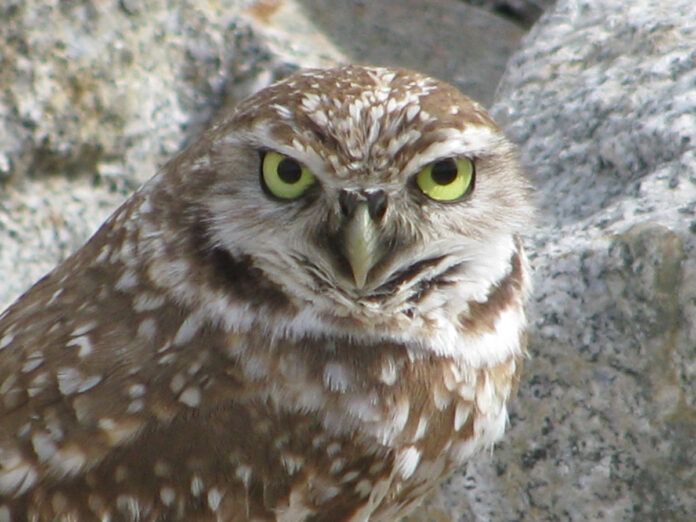The city of Chula Vista hosted the annual Multiple Species Conservation Program workshop on Dec. 8, with representatives from several municipalities and local agencies to inform people about regional environmental efforts. Specialists from the region came from Chula Vista, the County, the city of San Diego, California Department of Fish & Wildlife, San Diego County Water Authority, and San Diego Association of Governments.
City of Chula Vista Development Services Planning Manager Todd Philips said the MSCP was developed to preserve a network of habitat and open space, protecting biodiversity and enhancing the region’s quality of life on the local level. This workshop focused on MSCP accomplishments including habitat acquisitions, management and monitoring.
“The workshop provides for the public and other interested parties to learn more about the unique habitats in the San Diego region, the role the PCPS plays in open space, regional conservation, and recent conservation and management efforts,” said Philips.
Chula Vista Development Services Department Associate Planner Dai Hoang said over the past year, the city has focused on the Otay Ranch Preserve.
“The MSCP plan’s goals is to conserve public species, their habitats, such as the Quino Checkerspot butterfly,” he said.
Hoang said the Subarea Plan, adopted in 2003, provides conservation for 86 sensitive plant and wildlife species for the approximate 9,243 acres.
RECON Environmental Preserve Steward Biologist Anna Leavitt said the Otay Ranch Preserve is managed by both the city of Chula Vista and the County, together the Preserve Owner Manager (POM). She said the Salt Creek drainage area, west of the lower Otay Reservoir, and focused on the coastal cactus wren, and RECON’s habitation restoration efforts to increase the wren population, as well as protecting wren habitat from potential loss due to catastrophic fires. Coastal cactus wren is a special status species and a species of special concern through the California Department of Fish & Wildlife, and through other regional plans. Cactus Wren habitat requires thickets of cholla or prickly pear cactus for nesting. This habitat is not common, so it limits the habitats where these wrens can live. In Otay Ranch, cholla cactus has declined over the past 10 to 15 years due to competition of water resources, below average rainfall, and draught distress. The drought has declined the insect prey for foraging wren.
“Salt Creek is part of the ORP genetic cluster, and one of the four populations in San Diego County,’ she said, adding that there is a significant decline at Salt Creek in cactus wren territory.
In the Preserve, shrubs and weeds has been removed from cholla patches to encourage wren breeding, removing competition for resources, allowing the cholla cactus to thrive. It also provides bare ground for wrens to forage.
Through grants, several patches of chollas patches have and are in the process of restoration. Leavitt said that in 2021, it identified four acres for wren habitat enhancement.
“Lemonade berry grows quickly, and it is a problem in cactus wren habitat because it tops cholla and can eliminate that habitat,” adding the growth in these areas are destroying these patches, and removal is already underway. She said vegetation structure discourages the ground foraging behavior of cactus wrens, and in restoration is planting cholla and prickly pear cactus where lemonade berry is removed.
“That really backs up the importance of removing non-native species within wren habitat so it can open up ground, allow foraging ground for cactus wrens,” she said, saying that in a recent survey of the areas, the restoration is happening as planned.
Leavitt said U.S. Geological Survey monitoring data said the driving force behind low numbers of cactus wrens in the Otay population in 2014 were no longer in effect, in comparison to the significant decline in territories between 1992 and 2014. Other factors that could have influenced breeding productivity at Otay were habitat restoration, control of non-native vegetation, and that the wren hatching and fledgling success in 2019 were a probable response to these efforts.
“Three RECON restorations patches were established within their USGS monitoring area, and in Salt Creek, wrens were using the site shortly after restoration activity,” she said. “More work needs to be done for this species in support of increasing the population, but these are encouraging findings.”
County of San Diego Parks and Recreations Land Use/Environmental Planner Jennifer Price said the MSCP is a long-term regional habitat program focused on balancing the protection of plants and animal species, and the demand for housing, non-residential development, recreation and agriculture. The County partnered with 11 other jurisdictions in the early 90s to develop the MSCP. The County has three MSCP planning areas, the South County Plan, Draft North County Plan, and the future East County Plan area.
“DPR’s overall MSCP program focuses efforts to acquire, manage, and monitor preserved land in all three planning areas,” she said. “As of Dec. 31, 2021, DPR owns 44,200 acres of preserved lands in all three planning areas…Over the past 24 years, $221 million has been spent on acquisitions in all three plan areas to create or expand 41 county preserves.”
The County spent $125 million, and $96 million came from partnering industries and grants.
“The goal of the South County Plan is to assemble 98,379 acres preserve that supports the 85 plant and animal species covered by the MSCP,” said Price. “The South County preserve totals 79,976 acres, 81% of the MSCP preserve goal.”
A total of 123 acres of habitat were added to the South County Plan Preserve in 2021 through public and private acquisitions in the Otay preserve, she said. In 2021, DPR implemented nine restoration projects using $14.3 million in grant funding.
“These restoration projects benefitted a variety of MSCP covered species, including California coastal gnatcatcher, coastal cactus wren, Cooper’s hawks, and San Diego variations,” she said.
“DPR’s monitoring efforts have found approximately 1,200 native plant and animal species on county preserves in all three plan areas. Over 180 of the 1,200 species are special status species. In the South County Plan area 46 MSCP species have been documented on county preserves.”
California Department of Fish & Wildlife Senior Environmental Scientist supervisor Karen Drewe for the South Coast region including work at the Ranch Jamul Ecological Reserve, Ramona Grasslands County Preserve, and its ecological reserve.
In Rancho Jamul, its aquatic invasive species removal program introduced some pond turtles in 2014 and did not get recruitment, so it is preparing the area by removing invasive species like crayfish, and frogs.















